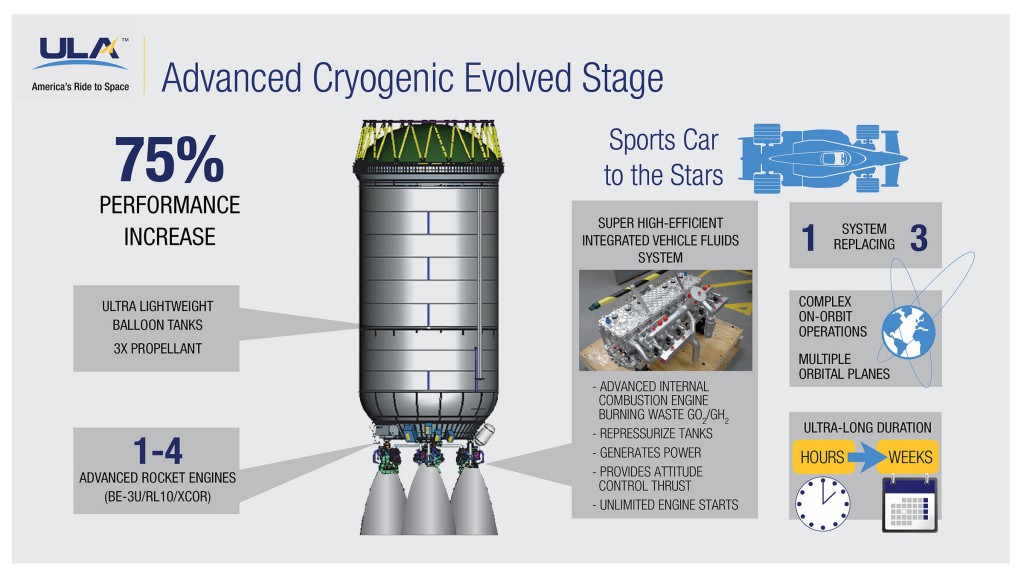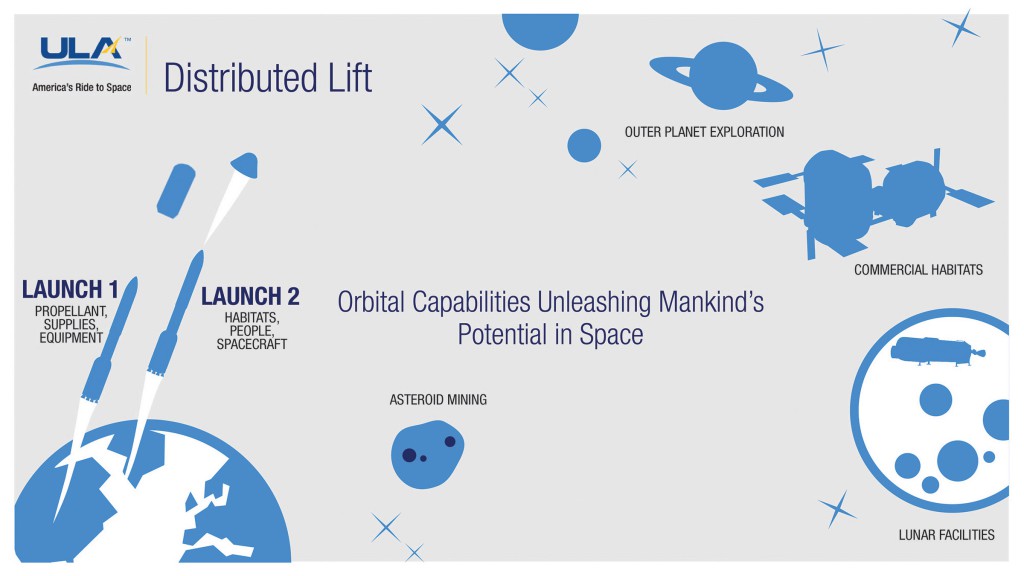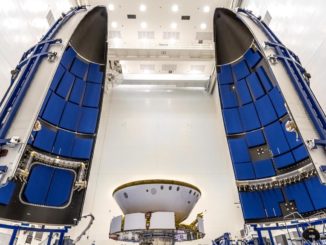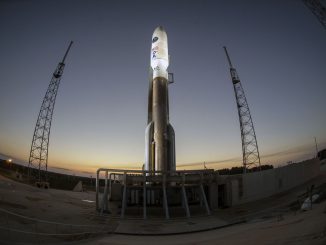CAPE CANAVERAL — United Launch Alliance revealed its visionary approach to space exploration in the next decade courtesy of the Vulcan rocket’s new, long-duration upper stage that can be fitted with as many as four engines to perform cargo resupply and astronaut transportation to far-flung destinations.
“This is the real game-changer,” Tory Bruno, the CEO and president of ULA, said in unveiling the company’s next-generation rocket on Monday.
It all starts with what Bruno calls “distributed lift” to split the launches of supplies and people into two flights without needing a large rocket. That’s when the Advanced Cryogenic Evolved Upper Stage, or ACES, takes over.
“Today, the concept for launching objects, for satellites, for missions into space is highly constrained. It’s trapped into the notion that the spacecraft has to be completely self-contained, physically. If it’s a satellite, it has to fit in the nose fairing. If it’s a capsule, it has to fit inside that capsule envelope. And once it goes up, there’s no opportunity to meaningfully, physically interact with it. That upper stage shatters that limitation and opens up this possibility of distributed lift.
“We can take our first launch, big fuel tanks, supplies, food, water, if it’s a manned mission. And the next mission will bring up the spacecraft or the astronauts in their capsule. With this advanced upper stage, which can fly around for weeks, it’s up there waiting, we can put these pieces together, and outside the deep part of Earth’s gravity well with that much impulse and propellant, we can do anything.
“We can go out and tap the resources that are in space. We can asteroid mine, we can build the infrastructure required for a real and permanent human presence. Fuel depots, water depots, commercial human habitats. This is truly a game-changer and I couldn’t be more excited about what this will do for the future of space, all enabled by that advanced, high-performance, ultralong-duration upper stage,” Bruno said.
The ACES stage is scheduled to debut in 2023, a year before distributed lift, which is the fourth and final development step to bring the full potential of the Vulcan rocket system.
“We can do anything you might imagine a permanent presence, a true commercial exploitation of space would require. All of that infrastructure that’s truly required to see the potential of space can now be put together,” Bruno said.
The existing high-energy Centaur upper stage will fly on Vulcan in the earliest years starting in 2019. The new upper stage will allow the new rocket to surpass the capability of the Delta 4-Heavy for U.S. National Reconnaissance Office spy satellites.
The engines will be manufactured by either Aerojet Rocketdyne, Blue Origin or XCOR. A decision on which supplier to use will come later. The stage can use between one and four powerplants, carry three times more propellant than Centaur, burning liquid hydrogen and liquid oxygen, and operate in space for weeks instead of mere hours.
“The ACES is a concept we’ve been working on for quite a few years,” said George Sowers, ULA’s vice president of strategic architecture and advanced programs.
“It is a LOX/hydrogen upper stage, high-energy, a balloon-tank, pressurize-stabilized tank, thin-walled stainless steel, a very efficient design. The Integrated Vehicle Fluids is really the key to expanding the capabilities of the stage.”
ULA is building the IVF with Roush, the NASCAR team. The internal combustion engine will take waste propellants and recycle them to repressurize the tanks, to generate electrical power and to provide attitude control thrust. It eliminated the need for helium and hydrazine to be carried on the stage versus today’s stages.
Cost to develop the Vulcan rocket, though, is being kept a secret. “We are not talking about how much it costs. We are paying for it, ourselves, ULA,” Bruno added.
See our earlier Vulcan coverage.





